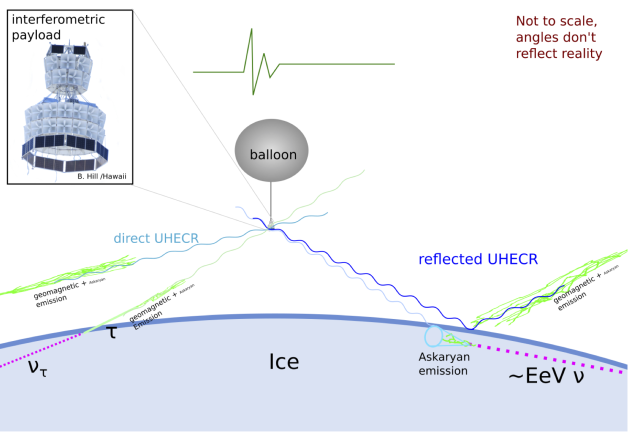ANtarctic Impulsive Transient Antenna
- 27 May 2020
- In a significant breakthrough, a team of researchers have succeeded in finding "a fountain of high-energy particles erupting from the ice" in Antarctica which according to the researchers could be proof of a parallel universe.
- ANtarctic Impulsive Transient Antenna or ANITA - an experiment maintained by researchers at NASA - has suddenly come into the limelight as the cosmic-ray shower that is key to the new discovery was a part of NASA's ANITA and Ice Cube experiment taking place in Antarctica.
What is ANITA?
- Designed by world's premier space agency NASA, the ANITA instrument is a radio telescope which is used to detect ultra-high energy cosmic-ray neutrinos from a scientific balloon flying over Antarctica.
- It is the first NASA observatory for neutrinos of any kind.
- It involves an array of radio antennas attached to a helium balloon which flies over the Antarctic ice sheet at 37,000 meters.
- To get a gauge of exactly how high is that, know that commercial flights fly almost a fourth of that height.
- The height is important here to shut out all other "noises" so that the ANITA antennas can "listen" to the cosmos and detect high-energy particles, known as neutrinos, which constantly bombard the planet.
- ANITA succeeded in detecting the 'fountain' of high-energy particles in 2006 and 2014 but the researchers initially thought them as background noise or glitches.
 Different ways signals can reach ANITA as the device floats over Antarctica hanging from its balloon
Different ways signals can reach ANITA as the device floats over Antarctica hanging from its balloon
How does ANITA detect Neutrinos?
- The ANITA instrument <detects these ultra-high energy neutrinos by use of the Askaryan effect.
- This effect predicts the production of a coherent radio emission from the cascade of particles produced in a high-energy particle interaction.
- In order to detect this radio emission (Askaryan pulses) we need a radio transparent medium for the interaction to occur in - and lots of it since these interactions is rare.
Experimental Time Frame
- ANITA-I launched from McMurdo, Antarctica in the summer of 2006–07.
- ANITA-II, a modified instrument with 40 antennas, launched from McMurdo Station in the summer of 2008–2009.
- ANITA-III, launched in December 2014.
- ANITA-IV launched in December 2016, with a lighter overall build, tunable notch filters and an improved trigger system.
Neutrinos
Askaryan Effect
|



